One of the most intriguing aspects of one of the world’s most famous carnivorous plants is the trapping mechanism of the Venus Flytrap (Dionaea muscipula).
While it’s not a plant that poses risks to humans, the Venus Flytrap survives through nourishment from insects, particularly flying insects, hence the name “Flytrap.”
But exactly how can a plant outsmart and trap an insect?
The Venus Flytrap opens and closes its trap quickly for feeding. Its trigger hairs let the plant know when to close the trap. When the trap is finished digesting its food 1-2 weeks later, it’ll open and wait for its next meal.
This article will cover everything about when and how Venus Flytraps open and close.
Why Do Venus Flytraps Close?
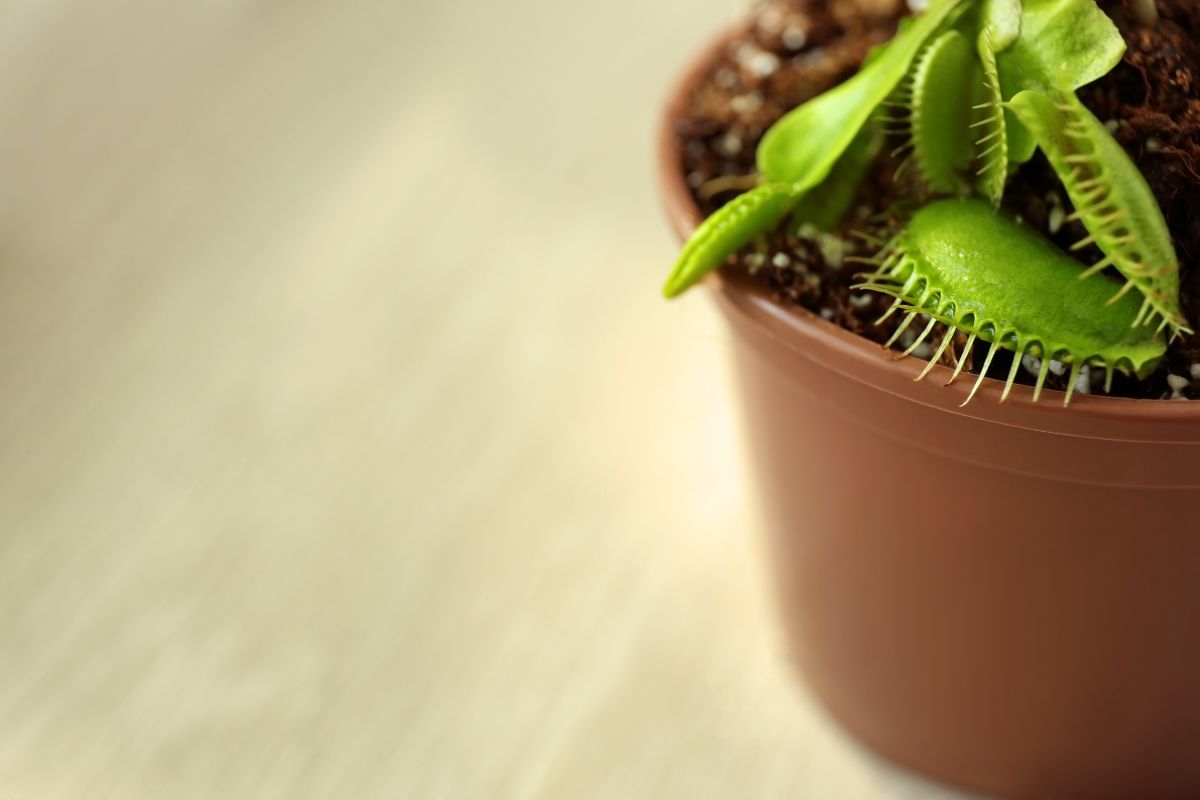
Native to the states of North and South Carolina, they thrive in their natural habitats in full sunlight and sandy bogs that are moisture-packed. Despite the sun and water that they receive, the soil in their natural habitat is nutrient-poor, so they get their nutrients from bugs they trap and eat.
Because of their need to trap insects to survive, the Venus Fly Trap has developed into such a capable predator with its fast traps. Gifted with one of the carnivorous plant kingdom’s fastest movements when closing its trap.
How and When Do Venus Flytraps Close?
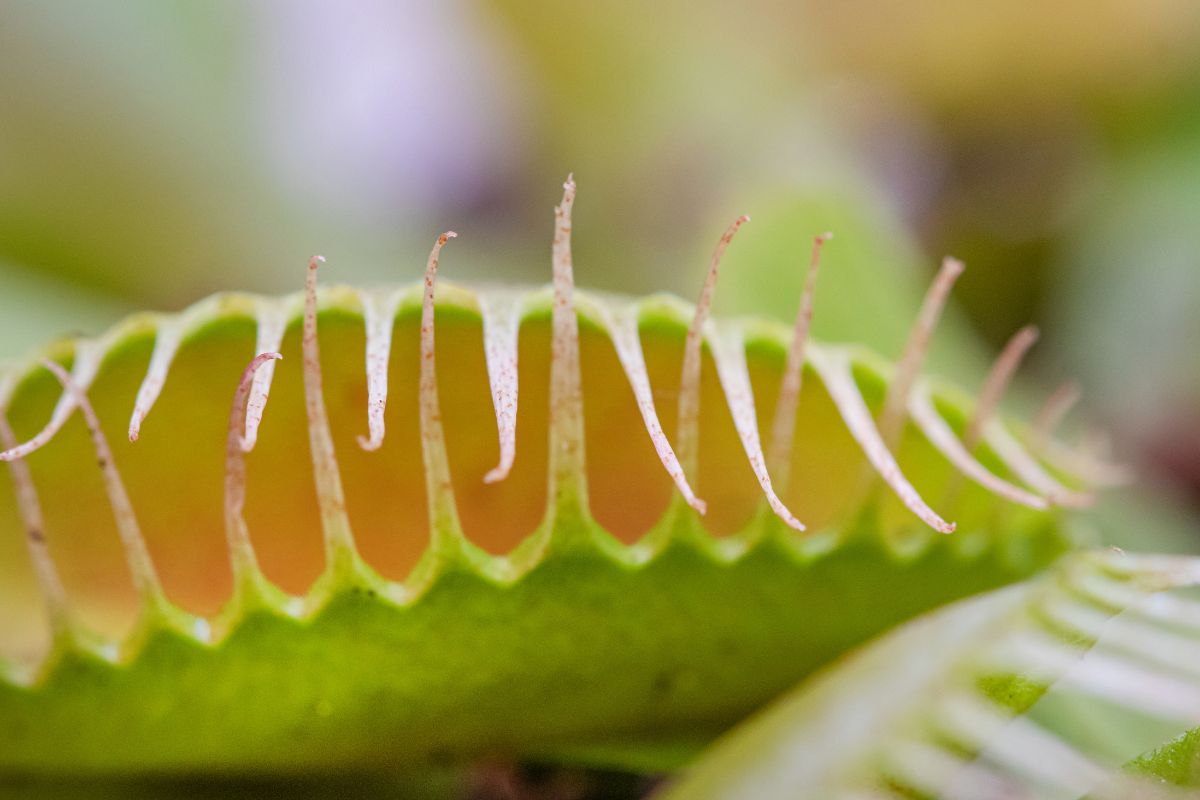
One of the more fascinating characteristics of the Venus Flytrap plant and its trapping abilities is how they close their traps and how quickly the traps close. The foliage resembles jaws with two lobes and cilia along the edges of those lobes that intertwine, and lock once closed.
The plant’s leaves have trigger hairs, and these hairs send electrical signals to activate the trapping mechanism. In as little as a fraction of a second, traps will close when signaled to do so. Each lobe will have three very fine trigger hairs arranged in a triangular design.
The trap will snap shut when an object or insect comes into contact twice with one of the three trigger hairs within a period of 20 seconds. Traps will never snap closed when stimulated only one time. A second contact with the trigger hairs is necessary for trap closure.
In this way, Mother Nature reduces the possibility that the traps will erroneously close on inanimate particles like dust, plant debris, or even rain.
Why Would an Insect Enter the Trap?
Venus Flytraps lure their potential prey with their bright colors and with a secret weapon: sweet and fragrant nectar.
The plant will produce nectar on the insides of the trap, which also features bright vibrant reddish hues. Prey may be initially attracted by the color or scent, perhaps both, and tricked into believing that it has found a flower to land on.
Once an insect begins to eat the trap’s nectar, it will most inevitably stimulate the trigger hairs by brushing over them while moving around inside the trap.
Do Insects Alone Trigger the Closing of the Trap?
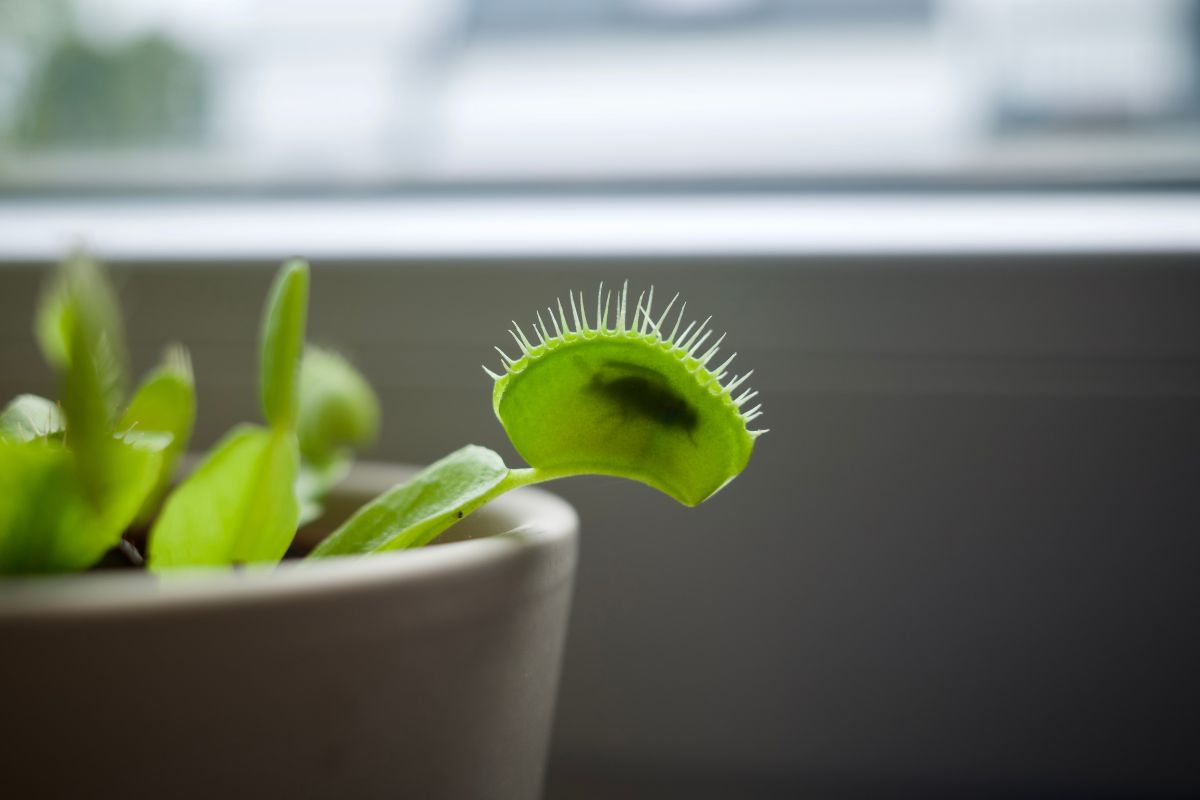
It’s not just insects that can trigger Venus Flytrap traps to close. Any number of things or beings can trigger a trap into closing.
It is possible for inanimate objects to mistakenly trigger a closing, such as twigs, air, plant debris, or rain. Also, apart from insects, humans, tiny rodents like mice, smallish lizards and frogs, and arachnids can cause a trap to close.
Even so, Venus Flytraps basically eat insects and arachnids. Even if they are capable of consuming meat, traps are designed for smaller prey.
Can Bugs Escape from a Closed Trap?
If an insect is very strong, it may be able to escape a Venus Flytrap’s closed trap. There are also bugs that can eat its way out of the trap to free itself. Slugs are an example of this.
However, bugs must work quickly, because once the trap closes, the plant immediately begins producing digestive enzymes. These enzymes will cause the prey to drown, and then digest the victim gradually and slowly.
Learn more about Good Venus Flytrap Food Options.
Why a Trap Won’t Close
If your venus fly trap won’t close, it could mean that the trap’s lobes are at the end of their life cycle and dying, so they will no longer close.
Another possibility is if you have recently acquired the plant, have moved it, or have experienced a change in climate, the plant could be still adapting to its new environment. If lobes begin to wither, the trap will no longer be capable of shutting.
How and When Does a Venus Flytrap Open?
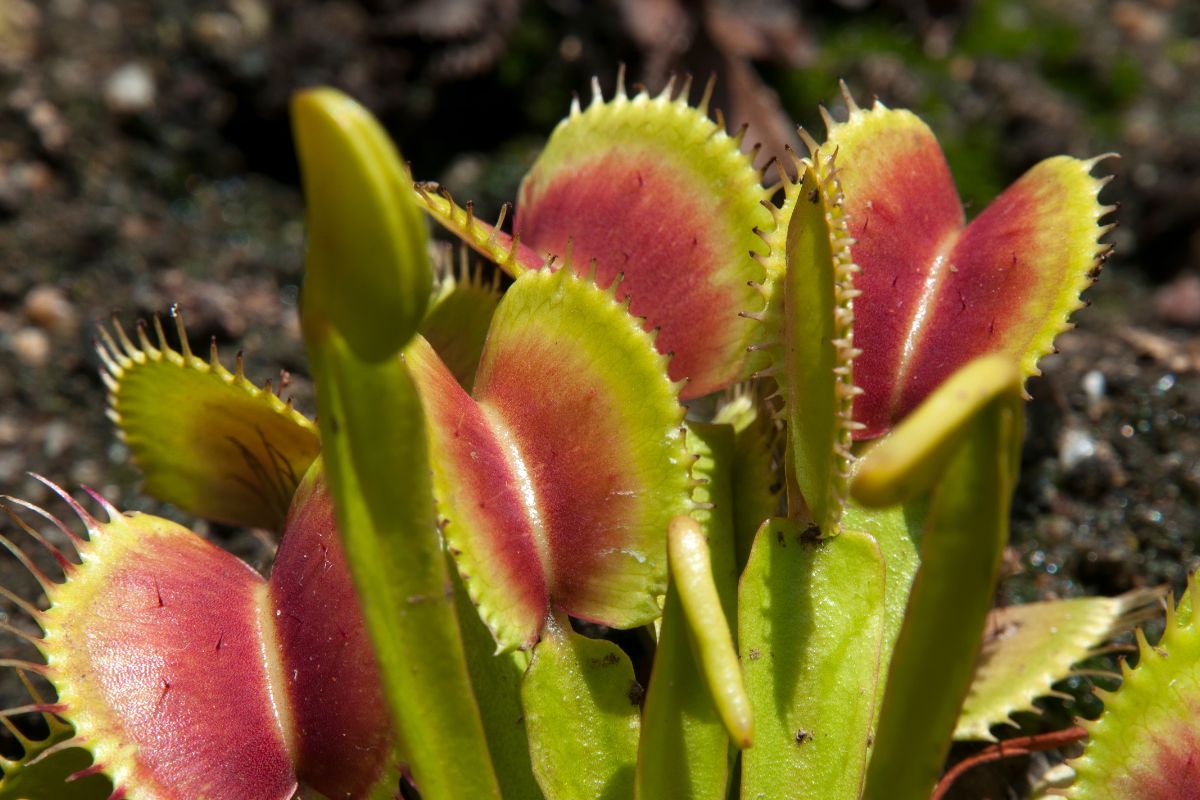
Once your plant’s trap has closed, it may reopen in two or three days if it is empty and has not captured prey. The trap may also open quickly if the thing inside it is not something that it can digest and use as food.
When the trap has captured an insect that can be used as food, it will commonly reopen after 10 to 14 days. That’s how long it will usually take the trap to properly digest a bug.
When a trap is closed and empty due to a false trigger or because a human has triggered the mechanism, the trap may open relatively quickly, even immediately in some cases. It might also maintain a semi opening for several hours if it does not perceive more stimuli.
The opening mechanism of a trap is not as rapid as the closing mechanism, so do not expect to see a quick reopening. However, once it has reopened, the trap is ready to capture new prey.
Venus Flytraps Open Following a Meal
If your plant has captured a fly or insect, and after it has consumed and digested the bug, the trap will open. Venus Fly Traps will digest most parts of bugs except for skeletons. When your plant’s trap reopens, you may find a dried skeleton left behind.
How Many Times Can a Venus Fly Trap Open and Close?
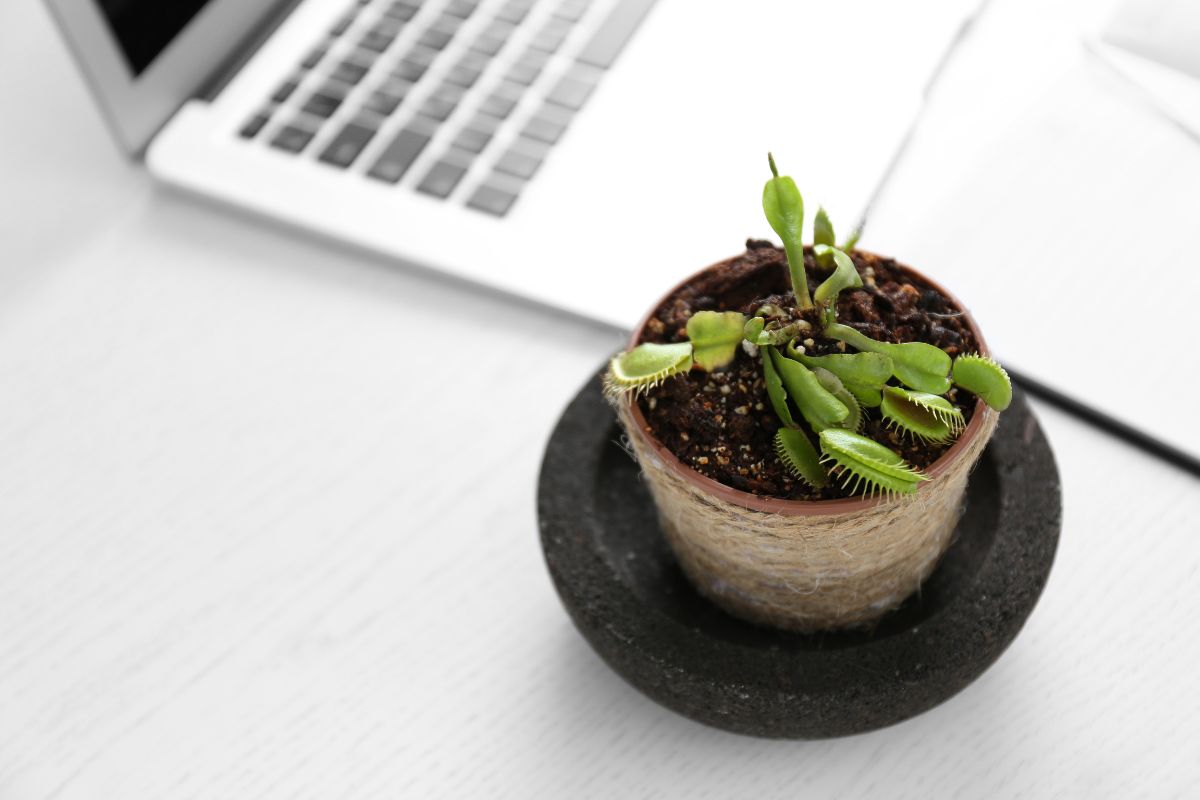
Most traps can open and close approximately 3 to 5 times before dying. Each trap consists of two foliage lobes, and each set of lobes will have a limited period of time that it can be used by the plant.
Once the period has exhausted itself, leaf lobes will wither and die, completing the life cycle of the individual trap.
Do venus fly traps open back up after that? Unfortunately, not.
Will a Trap Die if Touched by a Human?
No, an individual trap will not die because it has been touched one time. What does happen is that if you trigger the trap and it closes, you have wasted some of the plant’s vital energy, weakening the plant.
Do that multiple times and the trap may exhaust all its energy, leading to the trap not being able to close and digest food in the future, leading to its death. If you want to see a trap close, feed it an insect to observe the trap closing.
How Long Does a Venus Flytrap Stay Closed?
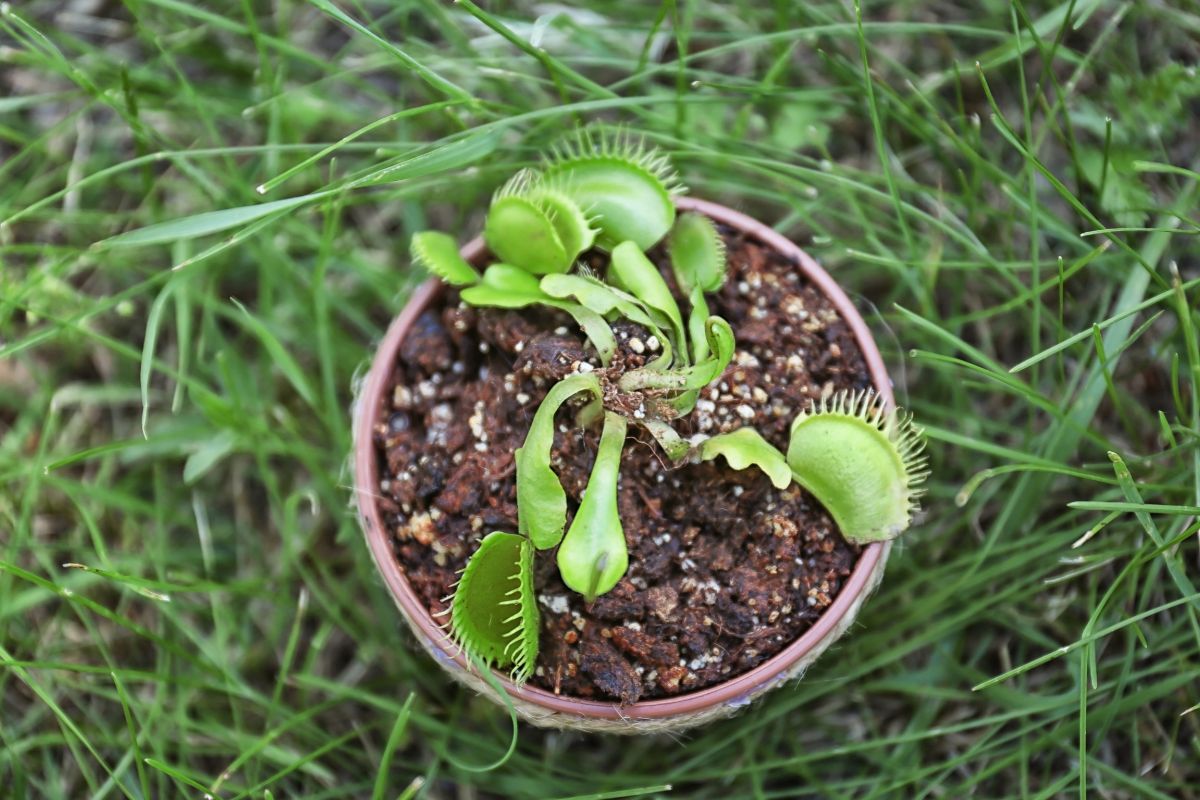
Flytraps may remain closed for several minutes, hours, or days depending on if it’s empty or what else is in its trap. When prey has been captured, length of time for when the Venus flytrap opens back up will also depend on the size of the insect.
The length of time for the trap’s digestive process can be as short as seven days or as long as 21 days.
When traps close, they are filled with enzymes for digestion until the prey is decomposed and absorbed. This closure also prevents bacteria or fungal infiltration during digestion.
How to Open a Venus Flytrap
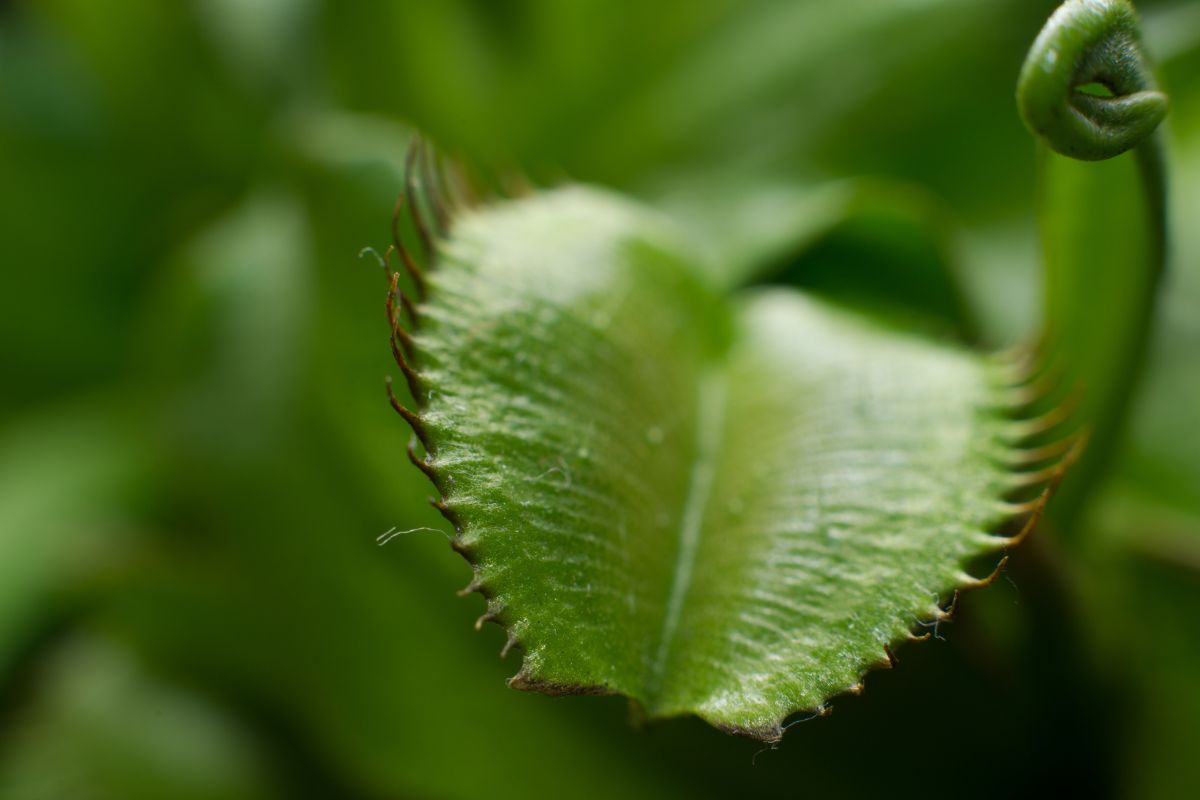
If you attempt to manually open a flytrap, you may harm and damage your plant. Trap leaves should never be forced open.
Closed flytraps will not reopen unless the plant decides it is the right time. In some cases, if the trap has exhausted its natural lifespan, it may not open at all, but may die still closed and fall from the plant.
How to open a Venus fly trap requires you being patient. It’s your best option!
Venus Fly Trap Opening and Closing Final Thoughts
How and when the Venus Flytraps open and close is determined by various factors. Understanding those factors will help you better understand how to keep your plant healthy and happy.
Here are other Venus Flytrap articles to help you learn more:

